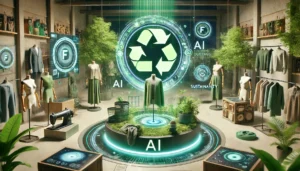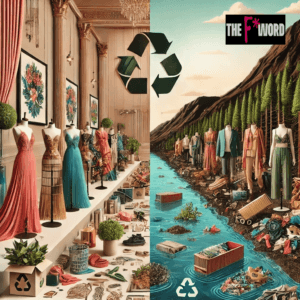Fashion is art. Creativity meets fabrics, mirroring the world and inspiring minds.
The digital world pushes the boundaries of fashion and art, offering designers limitless potential for expression.
It’s also a business, a market driven by trends and consumer demand. Researchers predict continuous growth in this industry, with a projected increase in global revenue of 11.17% from 2024 to 2028. With trends emerging and demand surging, the cycle of production tries to keep wardrobes fresh and profits growing.
Unfortunately, the fashion industry has long been known for its environmental footprint. From enormous water usage, water pollution, to landfills and microplastics in marine environments, the consequences have been dire. Garments are often designed for short lifespans, prioritizing temporary trends and quick offers over enduring quality. This cycle of overproduction is harmful to the planet.
In comes digital fashion – an alternative – with less waste, more personalization and new ways to own and experience fashion. It encompasses several features, from 3D designs that minimize physical waste to virtual garments that respond to limited orders or AR try-on options to prevent lost inventory. Sustainable fashion is possible through digital possibilities.
Virtual Garments, Real Impact
When talking about virtual clothing, we mean garments that are purely digital, designed and modeled in 3D software. They don’t require fabric, water, or shipping, massively reducing their environmental footprint.
They also offer endless creative possibilities without physical limitations.
Every day, artists, designers, influencers and consumers embrace virtual wardrobes, showcasing their digital outfits online, blurring the lines between the real and virtual worlds. This trend also reduces overconsumption, why buy 20 dresses if you have unlimited looks online?
For designers and clients who want to transform virtual clothes into physical ones, it can absolutely be done, with production based on demand to avoid waste.
Try It (Virtually) On Before Buying It
Through augmented reality, anyone can try virtual garments. Imagine browsing an online store and finding the perfect dress. Instead of ordering, waiting for it to come, paying for package insurance, and hoping it fits, AR lets you see how it looks on you immediately via your phone. AR is a win-win tech: customers can easily find clothes they love, and brands have fewer returns and textile waste.
Owning Digital Fashion Through NFTs
NFTs (non-fungible tokens) are shaking up the ownership model of the fashion industry. The NFT fashion marketplace offers designers new ways to monetize digital creations while buyers gain unique pieces of digital fashion history.
The digital evolution of fashion isn’t without its challenges. But the potential is undeniable. With brands committed to innovation and sustainability, the industry will build a eco-friendly and chic future.
How do you see digital fashion transforming your wardrobe choices and sustainability practices? Let us know in the comments!





